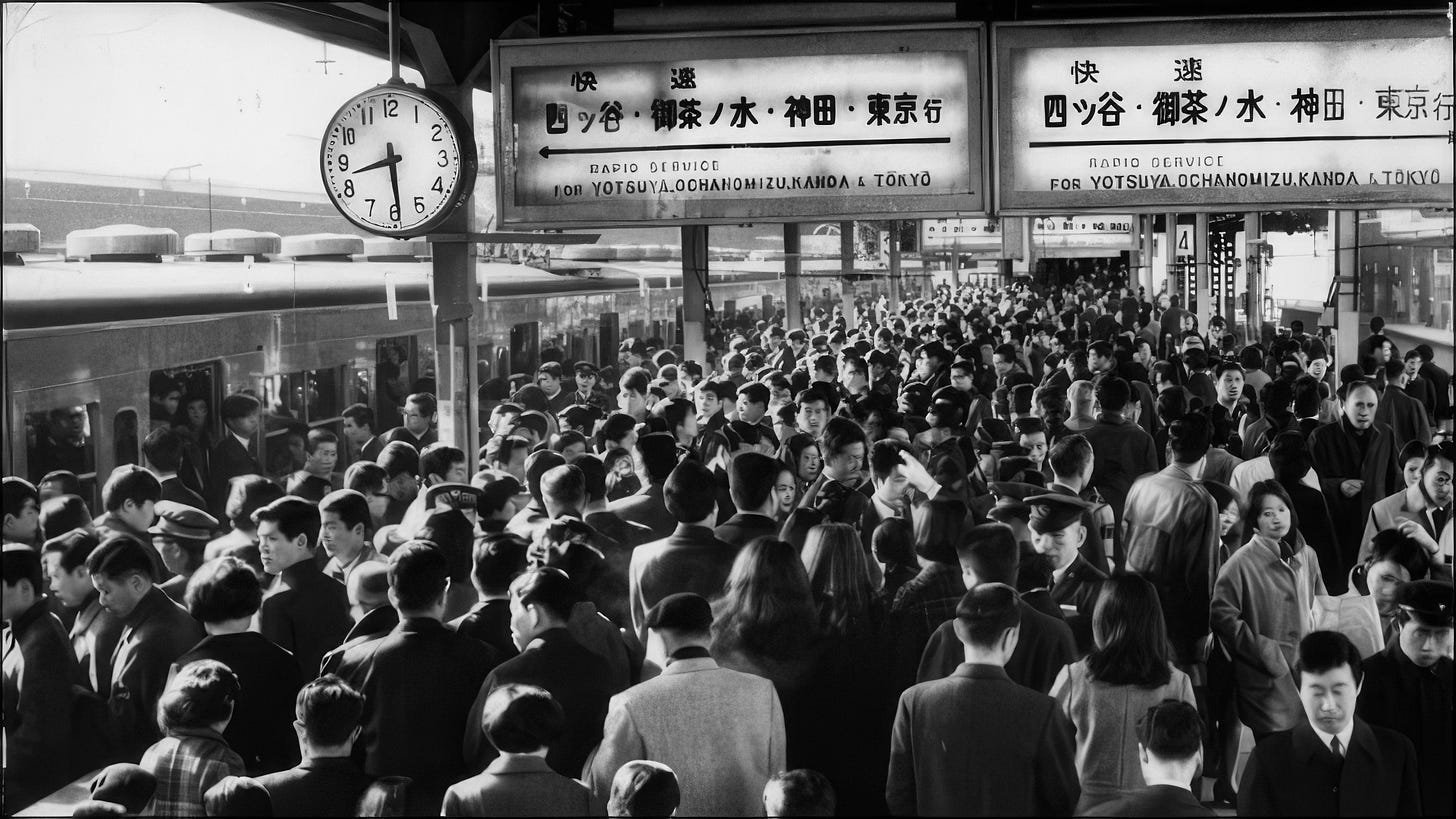Japan’s 2025 Crisis and the Disappearance of Its Cities
Super-Aged Society Reshaping the Future of Japan’s Cities and Communities
In this article, I will start by laying out the fundamental background necessary to understand the large-scale “vanishing municipalities” crisis that is expected to unfold, based on the current state of Japan in 2025—the first country in the world to enter a super-aged society.
2025 marks the year when Japan, ahead of the rest of the world, will face an unprecedented crisis. This issue has long been referred to in Japan as the “2025 Problem,” which essentially refers to the full-scale arrival of a super-aged society.
In Japan, a super-aged society is defined as a society where people aged 75 and over (late-stage elderly) account for more than one in five of the total population.
Three years ago, in 2022, the baby boomer generation (団塊世代, dankai sedai)—one of the largest generational groups in Japan—began reaching the age of 75. By 2025, this group will constitute 18% of the total population. The baby boomers were born during the first post-war baby boom, from 1947 to 1949, and by 2025, they will all be over 75. In other words, the number of late-stage elderly in Japan is now estimated to exceed 21 million people.
One defining characteristic of this generation is that they came of age during Japan’s high-growth economic era, a time of rapid economic expansion following World War II. They entered society during a period of economic stability, which profoundly shaped their worldview and expectations for the future.
From 1955 to around 1973, Japan’s real economic growth rate averaged nearly 10% per year. This period was marked by a significant improvement in material wealth and large-scale urban development. For this generation, life was defined by the belief that “tomorrow will always be better than today,” and they were able to enjoy decades of continuous economic prosperity.
To sustain this momentum, Japan greatly expanded its social welfare system, creating a structure that ensured broad coverage for the entire population. As a result, income disparity remained relatively low, and Japan effectively established a quasi-socialist welfare system that provided stability for all citizens.
However, the illusion of perpetual economic growth collapsed abruptly.
In 1985, growing concerns over Japan’s rapid economic expansion led the United States to negotiate the Plaza Accord, which intentionally steered the Japanese economy into a bubble phase. This artificial bubble created an era of excess, where speculative investments soared and asset values inflated far beyond sustainable levels.
As a result, many Japanese people lost their sense of direction and shifted their focus toward satisfying immediate desires, leading to the erosion of the strong work ethic that had defined the previous decades.
By 1991, the first signs of the bubble’s collapse had begun to appear, and by 1997, it had fully burst. From that point forward, Japan lost its growth potential and entered a prolonged economic decline spanning nearly three decades.
Because of this, some people refer to 1985 as Japan’s “second defeat” since World War II.
For the baby boomer generation, who had spent most of their lives enjoying one of the world’s most materially affluent societies, the sudden shift to economic hardship was difficult to endure. Their fear of losing the wealth they had taken for granted became a powerful driving force, ultimately shaping many of the challenges Japan faces today.
This generation—and their children—constitute the majority of Japan’s total population. This means that, politically, they represent the largest voting bloc, giving them substantial influence over government policy. Even as it became clear that Japan’s social security system was unsustainable, political pressure from this generation ensured that unsustainable welfare policies remained in place, accelerating Japan’s fiscal deterioration.
For politicians, failing to secure support from this demographic meant losing elections. As a result, even though the impending demographic crisis was evident as early as the 1990s, no serious measures were taken. Instead, political leaders prioritized the demands of the aging population while continuously deferring solutions to future generations.
One reason this issue has persisted for so long is that Japan’s leadership is overwhelmingly elderly.
・As of 2024, the average age of Japan’s cabinet ministers is 63.
・The average age of members of the National Diet (Japan’s parliament) is 55.
Additionally, as has been frequently pointed out, Japan has the lowest percentage of female politicians among developed nations. This means that the voices of younger generations and women are largely unheard. Given that young people are now a numerical minority, they have largely given up on making political demands, knowing that their voices will not be reflected in policy.
This elderly-dominated political system has continued functioning despite its obvious dysfunction. However, a new crisis has now emerged—one that Japan can no longer ignore.
Many local municipalities across Japan are now facing complete population collapse, leading to the alarming prediction that many cities will simply cease to exist. These municipalities are now referred to as “potentially vanishing municipalities” (消滅可能性自治体).
In upcoming articles, I will explore this issue in detail—what it means for Japan’s future and what, if anything, can be done to address it.



